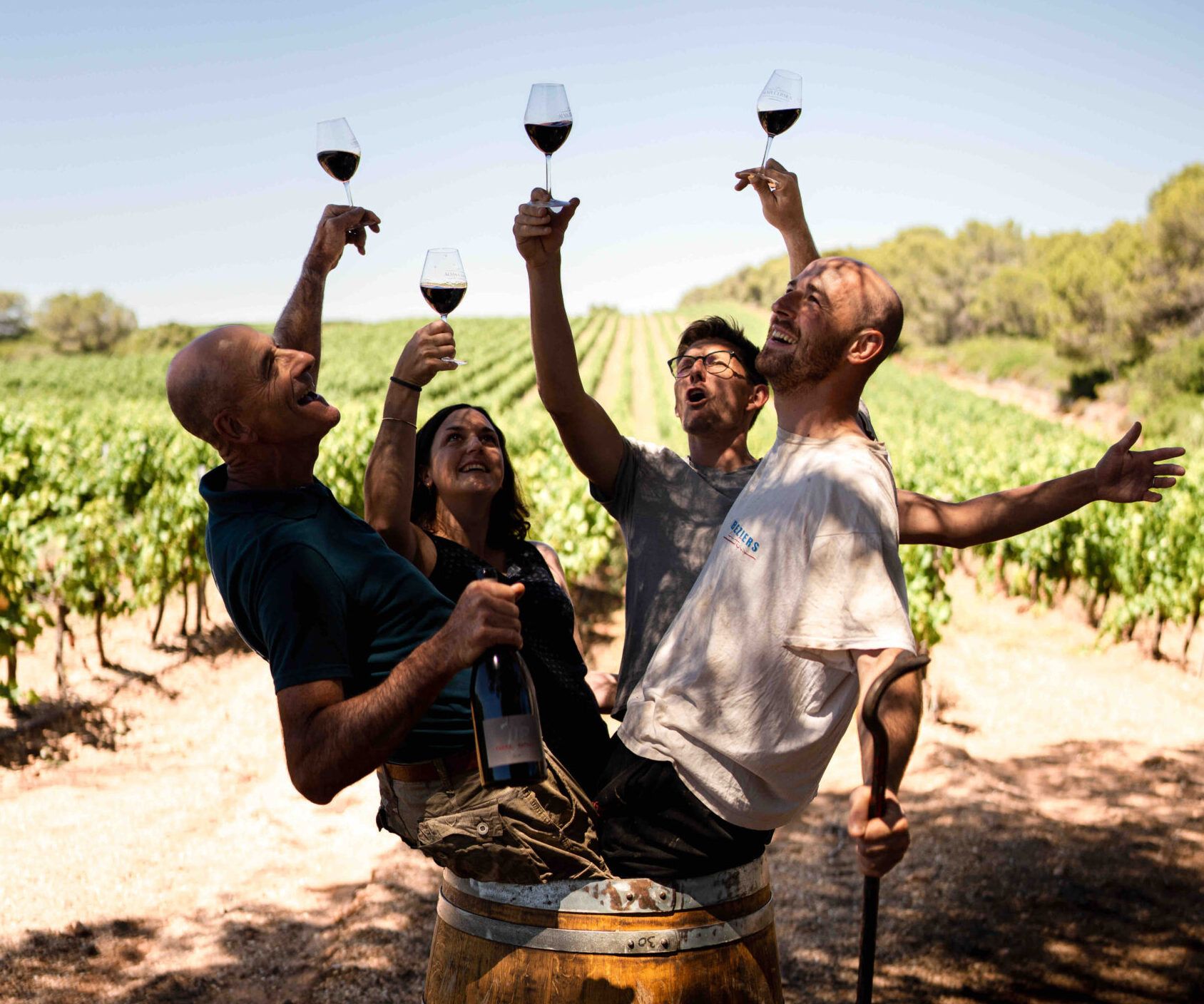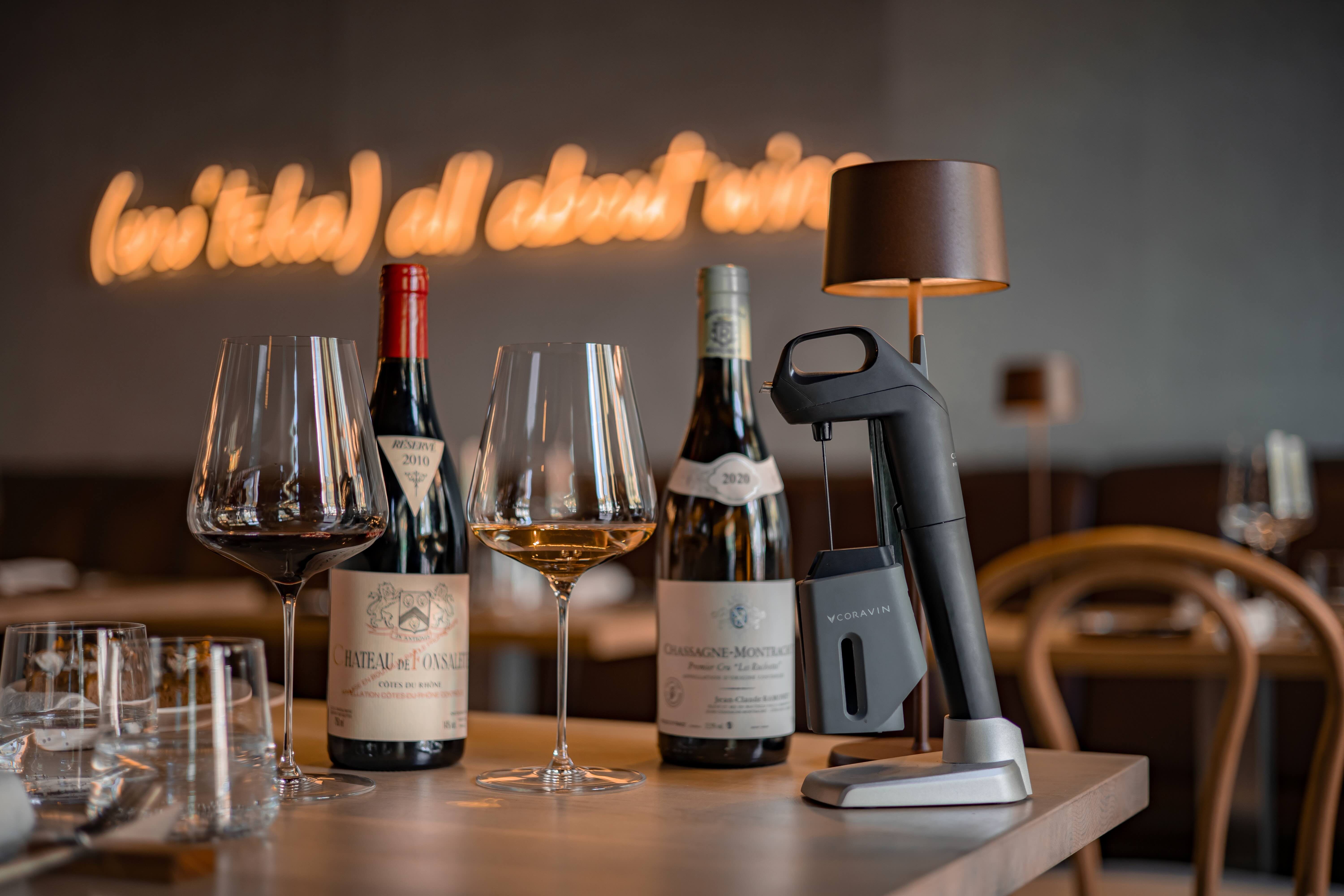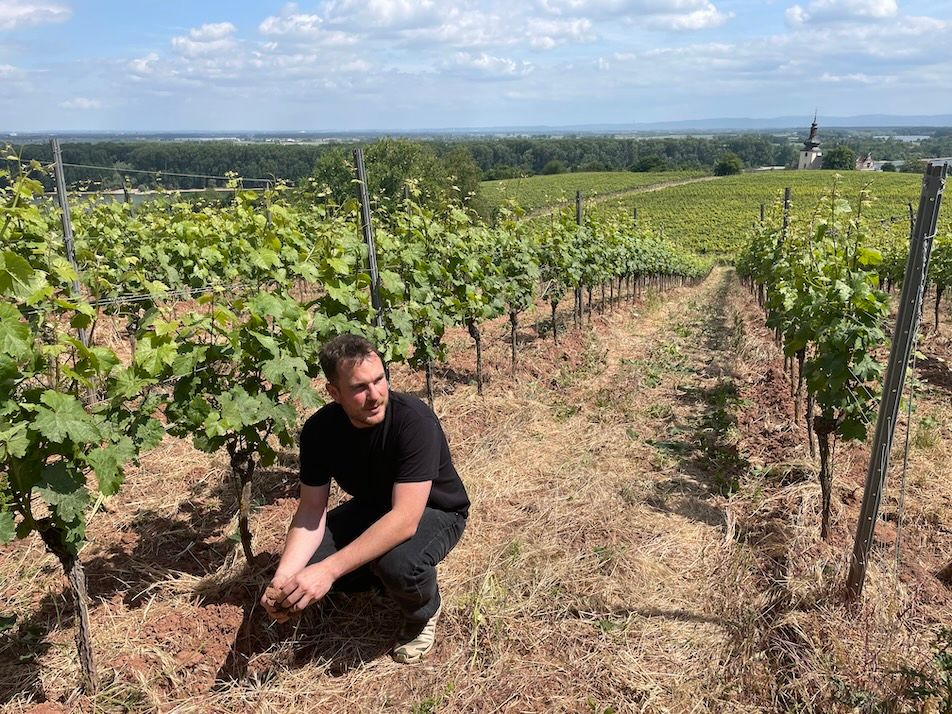After discovering why IGP Pays d’Oc Pinot Noir is worth getting on your radar, Dean tastes and rates the 6 wines picked out by Peter McCombie MW.
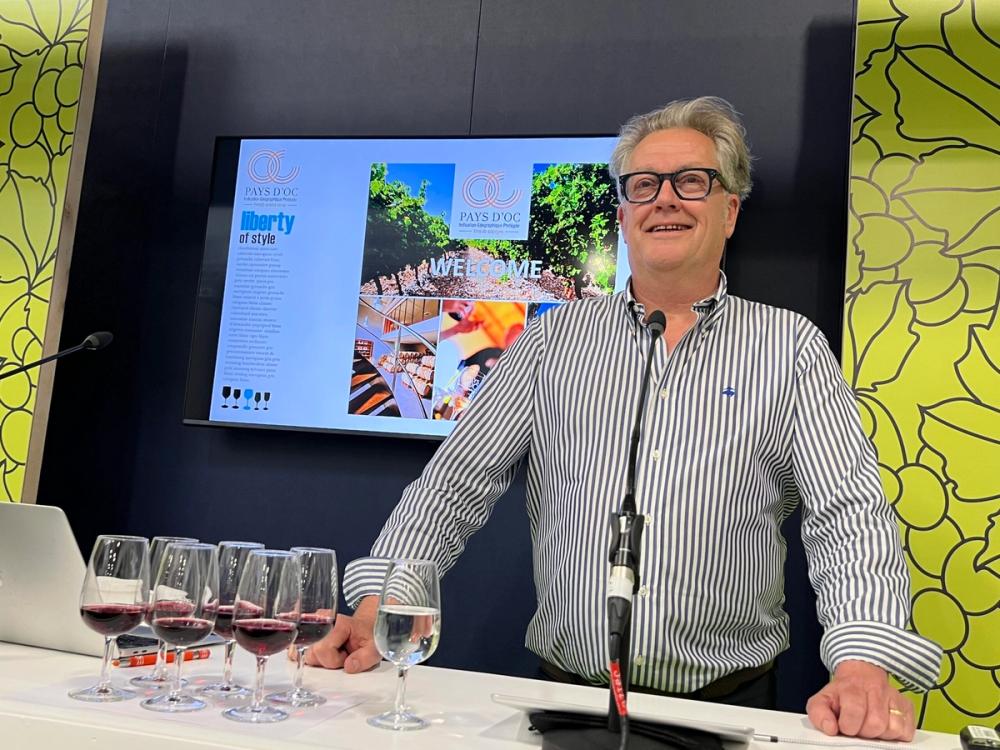
IGP Pays d’Oc Pinot Noir is a great alternative: Peter McCombie MW, London Wine Fair, 2023
Pinot Noir is often referred to as ‘the heartbreak grape’. Thin-skinned, susceptible to a variety of diseases, its unbridled beauty in the glass is matched only by how difficult it is to grow successfully and turn into fine wine. To add insult to injury, after working so hard to take care of the vineyard, winemakers are only rewarded with very low yields – ones which can decrease rapidly as the vines grow old.
As a result, and because of drinking trends, Pinot Noir commands a premium price, especially when it comes from wine regions where the price of arable land is prohibitively expensive – Burgundy, Central Otago and Russian River to name just three.
Which all plays into the hands of IGP Pays d’Oc Pinot Noir where smart wine consumers have already started to put their money. It was refreshing to see Master of Wine Peter McCombie host a masterclass on the subject at this year’s London Wine Fair and focus his expertise and tasting credentials on six IGP Pays d’Oc Pinot Noirs that are world class and priced, wait for it, around the €7 mark (retail price in France for consumers) – prices that should be manna from heaven in these cash-strapped times.
Full details of the wines and how to get hold of them follow, but first a bit of background on why IGP Pays d’Oc Pinot Noir is proving to be so successful – the region now producing a whopping 145,000 hectolitres of Pinot Noir, its fourth most popular red grape.
How the region aids Pinot Noir
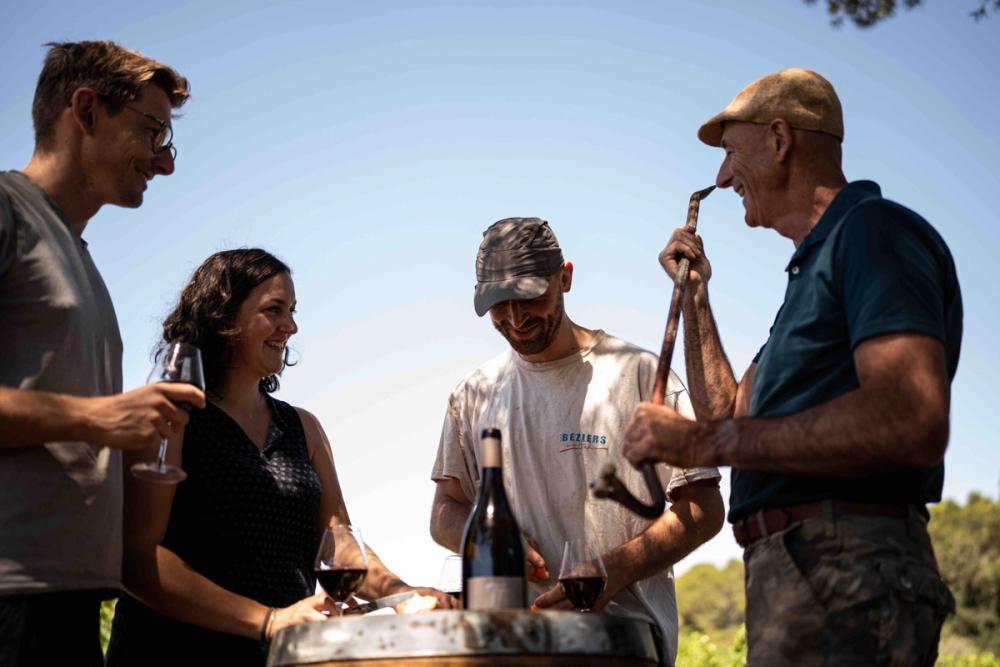
145,000 hectolitres of IGP Pays d’Oc Pinot Noir is produced every year
The Pays d’Oc vineyard represents a massive 110,000 hectares in Languedoc-Roussillon, from the western bank of the Rhône to the Spanish border, making the Languedoc-Roussillon the world’s second largest vineyard. The sheer variety of soils and climates means that there are numerous sites that fit the demanding requirements of Pinot Noir – it’s a grape that needs a lot of sun to ripen fully and tease out its full array of aromas, but it also needs cool nights – in Pays d’Oc it gets these through Mediterranean sun and the cooling effect brought on by ocean breezes, and high altitude which delivers a high diurnal range ie. hot in the day and cool by night.
Diurnal fluctuations are key with grape-growing because it allows vines to ‘relax’ after the heat of the day but also they are perfect for the production of polyphenols and antioxidants.
Pinot Noir likes well-drained soils without too much rain which in Pays d’Oc it gets with limestone soils; in many cases the wine also benefits from an extra charge of minerality which it gets through the Cretaceous soils and ferrous clay in the area.
The high number of sun days and the effect of the four main winds in the region is an antidote, if you will, to disease, particularly mould – allowing the fruit to get the concentration it needs to ripen fully and develop an exciting range of flavours and complete its aromatic palette.
And, because of the sheer diversity of the specific vineyard sites, every Pinot Noir wine has unique characteristics – it being a grape variety that is heavily-influenced by exactly where it is grown.
Putting IGP Pays d’Oc Pinot Noir to the test

At this year’s London Wine Fair, Master of Wine Peter McCombie presented a masterclass entitled ‘Pinot Noir by IGP Pays d’Oc – the great alternative’ in which he showed six Pinot Noirs that he had selected from a wide selection of wines from the area.
All wine producers are seeking UK distribution, the wines are all 100% Pinot Noir, and the prices quoted are recommended retail prices for consumers in France.
Fortant de France, Terroir d’Altitude, 2021, 13.5%
Robert Skalli is the son of Algerian immigrants who set up this influential winery over 100 years ago with the aim of producing single varietal wines. Located in the coastal town of Sete, the winery has 2,700 oak barrels for ageing. The Skallis have always been huge advocates of producing varietal wines, which went against the AOP system of the time. In 1987 a group of winemakers led by Robert Skalli and Jacques Gravegeal started releasing varietal wines under the Vins de Pays d’Oc label for the first time. This Pinot is a new wine in the winery’s Terroir d’Altitude label dedicated to making powerful, concentrated and elegant wines from vineyards that lie between 50 and 250m high so the vines benefit from cool nights – with three soil types that increase complexity in the wines. The climate here is hot and dry with cool nights which gives this wine its ripe concentration and freshness.
The fruit for this wine is given a four-day pre-soak, which adds a bit of gentle tannin. The nose and palate offer dark red and black fruits with a hint of sweet spices and oak. The fruit has a core of sweetness, a touch of vanilla, and cooking spice. Almost New World in style. An ideal match for grilled salmon steak on a bed of Asian noodles.
Retail price at cellar door: €8.90–10.90. Available direct from the estate
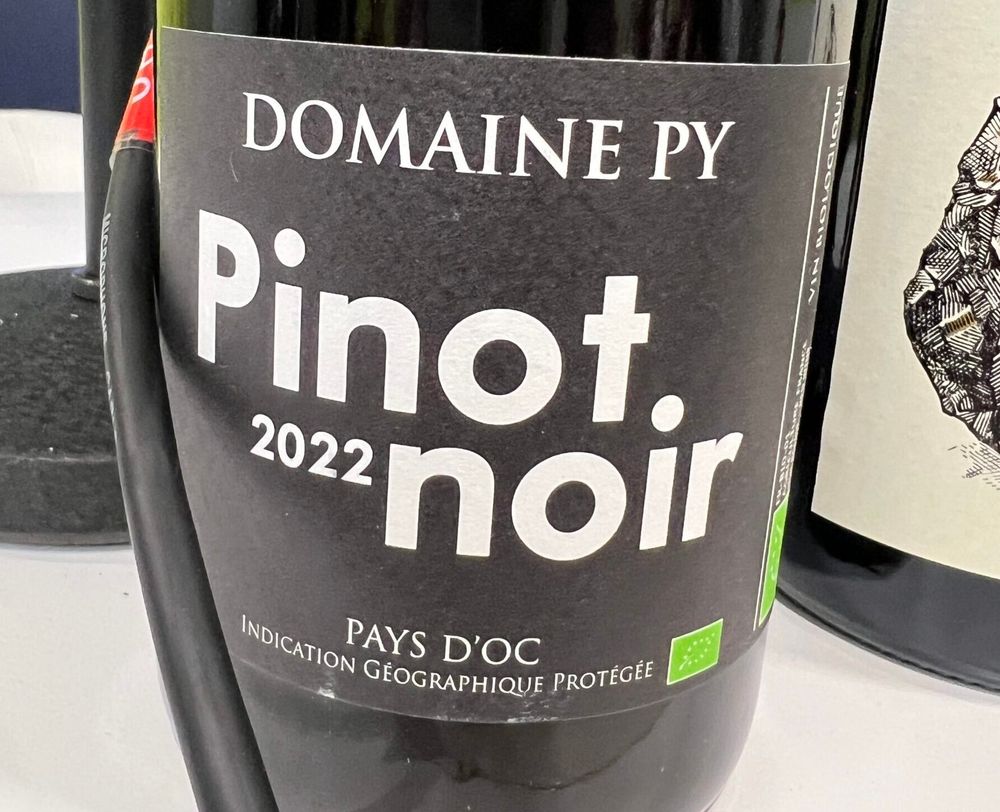
Domaine Py, Pinot Noir, 2022, 12.5%
Converting 130 hectares to organic agriculture over three years, was the first priority for the family that bought this winery 20 years ago – located in the Corbières hills east of Carcassonne. The fruit for this wine comes from 7-15 year-old vines grown at 320m altitude, which was then de-stemmed, given a 72-hour cold soak then fermented in steel for 12 days with light punch overs.
Light cherry red to look at, this is a pretty, light style of Pinot Noir with bags of red fruit up front, fresh, juicy, with creamy strawberry flavours dominating the palate. There’s a touch of tannin, decent length but this pretty Pinot is all about light, easy-going enjoyment. An ideal match for barbecued steak, pasta and robust salads.
Retail price at cellar door: €6.85. Available direct from the estate
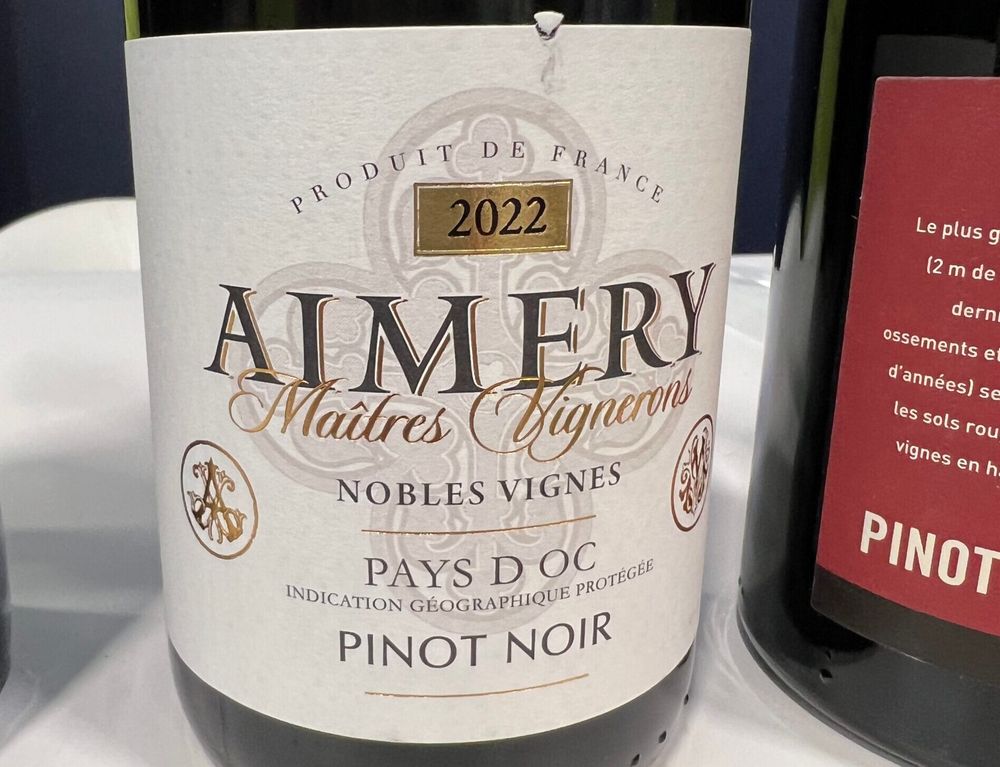
Sieur d’Arques, Aimery, 2022, 13%
This influential cooperative has been making sparkling and still wines since 1946 at its base in Limoux, 25km south of Carcassonne. With 193 grower members it has plenty of different terroirs and expertise to call on. The vineyards this Pinot comes from, benefits from 2-500m of altitude, a Mediterranean influence and clay and limestone soils. The wine is made in open top fermenters then aged in steel.
The wine is light red in appearance, almost see-through. On the nose there are heady aromas of red berries. In the mouth the wine is rounded and welcoming with a savoury edge (an effect of the cool nights) that gives it a serious quality. You pick up mouth-watering flavours of raspberry and mulberry, with a bit of firmness developing before an excellent dry finish. Lovely clean bite to this wine. An ideal match for grilled breast of duck or cassoulet even.
Retail price at cellar door: €7.50. Available direct from the estate

Anne de Joyeuse, Terroir des Dinosaures Gargantuavis, 2022, 13%
Renowned for its wines from high-altitude vineyards, the Haute Vallée de l’Aude, where this Limoux-based cooperative is located, and its Cretaceous soils are also one of the world’s greatest deposits of dinosaur fossils – hence why this Pinot Noir is part of a ‘dinosaur collection’. The fruit for this wine comes from vineyards that are 200-350 metres in altitude boasting red ferrous and clay soils. There’s a cold soak pre-fermentation, daily punchdowns then ageing in large wooden vats and barrels, although the judicious use of oak means this wine is not about the wood, rather it’s given some structure and texture.
Deep ruby red in the glass, there’s a nose of red and black fruit (raspberry and morello cherry) which gives way to red flowers, a herbaceous quality with a touch of incense. On the palate the wine is fresh, easy-going with a New World kirsch note that evolves into a toasted nut and vanilla quality. Textured with moderate tannins. An ideal match for veal, braised guinea fowl with porcini mushrooms or a sheep’s cheese.
Retail price at cellar door: €8.90. Available direct from the estate

Joseph Castan, Elegance, 2022, 13%
Although there is winemaking tradition in his family that dates back over a century, Joseph Castan only set up this winery 16 years ago. The vineyards for this wine, part of Castan’s Elégance range, are located in the clay and limestone hills overlooking Carcassonne citadel. The North/ North-West aspect and the high diurnal range imbues the wine with freshness and delicate aromas. The wine has a 24-hour cold soak before fermenting in concrete vats and then a partial ageing in oak.
Aromas of cherry and pepper give way to a distinctive note of watermelon. On the palate the wine has red fruit at the fore with raspberries uppermost, the wine is fresh, lively with a delicious fruity core. There is a decent bite to the wine on its finish which balances it perfectly. An ideal match for a plate of charcuterie or white meat dishes with a lot of flavour and some spice perhaps – think Basque-style chicken.
Retail price at cellar door: €5.90. Available direct from the estate

Domaine Grauzan, Pinot Noir, 2022, 13%
Domaine Grauzan is a winery based just north of Béziers – one of the domaines operated by exporter Alexander Krossa. The vineyards where the fruit for this wine is sourced from can be found 120m up on clay and limestone soils. The vinification is a mix of modern and traditional winemaking – the ripe fruit fermented traditionally with a percentage aged in barrel after a short maceration.
On the nose the wine is delicate and floral, with cherry and raspberry notes that give way to a darker, earthy quality. In the mouth the wine is generous, fleshy and round but the raspberry fruit has less ripeness than the wines listed above (not unripe) which gives the wine a decent bite. Good tannins too. An ideal match for grilled beef, vegetarian pasta dishes and veal stew. €6.50 only in export markets
Vineyard photography by © DrinkInModeration
